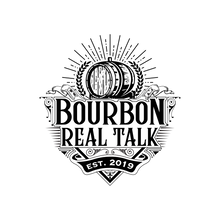
Signs That The Bourbon Boom Is Over
Photo by: ColleenMichaels - stock.adobe.com
*Disclaimer: The following blog post regarding the Bourbon Boom discusses the current state of the bourbon market, recent trends, and predictions for the future. It is important to note that the opinions expressed here are based on available industry information and may not represent the views of all bourbon enthusiasts.*
In recent whiskey news, there's been a lot of buzz about the value of rare whiskey bottles declining over the past year. According to an article by The Drinks Business, this information comes from the Knight Frank Luxury Investment Index, and it marks a significant shift in the bourbon market. While predicting the future of the bourbon industry is a complex task, we can analyze some key industry factors that may shed light on what's happening.
The Bourbon Dark Ages
To understand the current state of the bourbon market, we need to take a trip back in time to what enthusiasts often refer to as the "Bourbon Dark Ages." This period started in the 1960s and continued through the '70s, '80s, and '90s. During this time, vodka gained immense popularity due to misconceptions about its calorie content and claims of being odorless. These misconceptions led to a decline in bourbon's market share as it struggled to compete with vodka's rise.
Bourbon producers tried various tactics to reverse this trend, including releasing decanter series and hiring famous artists to create bottle designs. However, price wars ensued, causing whiskey prices to plummet. Many distilleries and brands went out of business, leaving the industry in a dire situation.
The Birth of Premiumization
The turning point for bourbon began around 1984 when Elmer T. Lee introduced Blanton's Single Barrel Bourbon. This marked the first-ever single barrel bourbon, which could be sold at a premium price. Each release was unique, creating an opportunity to market it as a one-of-a-kind experience. This strategy aimed to attract repeat customers and boost prices—a success story in the making.
In 1987, Booker Noe from Jim Beam introduced Booker's, one of the first widely distributed cask strength bourbons and publicly advertised as a small batch. Jim Beam launched its small batch series In 1992, featuring Baker's, Basil Hayden, and Knob Creek. In 1994, Pappy Van Winkle released its first 20-year product. The industry's path forward turned out to be the opposite of what it initially thought: premiumization.
The goal became raising prices while marketing bourbon as a unique experience for consumers. This shift laid the foundation for the bourbon boom we see today.
Market Indicators: Secondary Market and More
The secondary market plays a crucial role in assessing the bourbon boom's status. Secondary prices, where consumers trade among themselves, have been a reliable indicator of market trends. However, analyzing these trends is increasingly complex due to several factors.
1. Consumer Fragmentation: The market now includes non-distiller producers and craft distilleries, making it challenging to collect comprehensive data.
2. Craft Distilleries: The growth of craft distilleries can blur the lines between a downturn in larger distilleries and a shift in market share.
3. Foreign Market Growth: Major distilleries have expanded overseas, targeting markets like India, Japan, Europe, and China.
4. FOMO (Fear of Missing Out): Consumer behavior has been influenced by FOMO, leading to increased whiskey purchases.
5. False Demand: The bourbon secondary market has attracted speculators looking to profit from supply and demand imbalances.
6. COVID-19 Impact: The pandemic boosted secondary prices due to increased disposable income and changes in consumer habits.
7. Sports Betting Shift: With the absence of sports betting during the pandemic, some turned to whiskey gambling through games like razzles. (Gambling to win a bottle based on the Illinois state lottery)
**Is the Bourbon Boom Over?**
While a decline in secondary market prices may raise concerns about the bourbon boom, there are counterarguments to consider:
1. Brand Acquisitions: Major corporations have acquired brands like Blue Run and Penelope, signaling confidence in the bourbon market's future. However, some acquisitions could be defensive strategies.
2. Market Correction: Prices may be adjusting after the pandemic-fueled frenzy, but it doesn't necessarily mean the end of bourbon growth.
3. Predatory Pricing: Some retailers employ price gouging practices, which can impact secondary market prices.
The Future of Bourbon
In conclusion, the bourbon boom may have cooled off slightly due to various factors, including inflation and changes in consumer behavior. However, this doesn't necessarily signify a looming bust. The real test may come when distillery expansions lead to new inventory hitting the market, a development that's likely several years away. Until then, the bourbon industry appears to be on stable ground, with growth prospects on the horizon.
So, is there a bourbon bust happening right now? Not likely. Is there potential for one in the future? Perhaps, but we'll have to wait and see how the industry evolves. In the meantime, bourbon enthusiasts can continue to explore and enjoy the wide range of bourbons available, both old and new. Cheers to the world of whiskey!
WATCH THIS EPISODE OF THE BOURBON REAL TALK PODCAST HERE. Check out Bourbon Real Talk Merch here!
